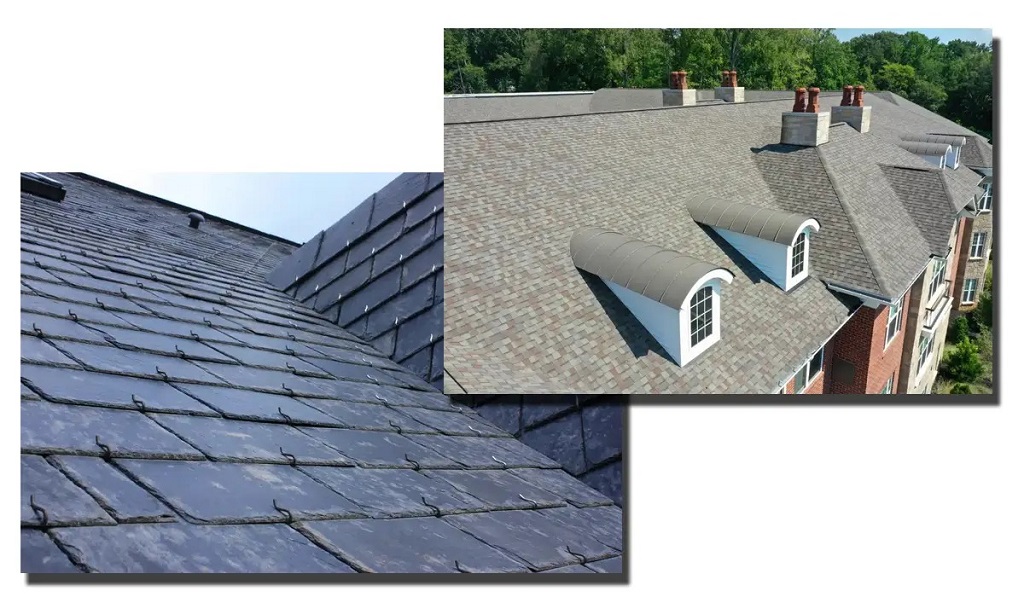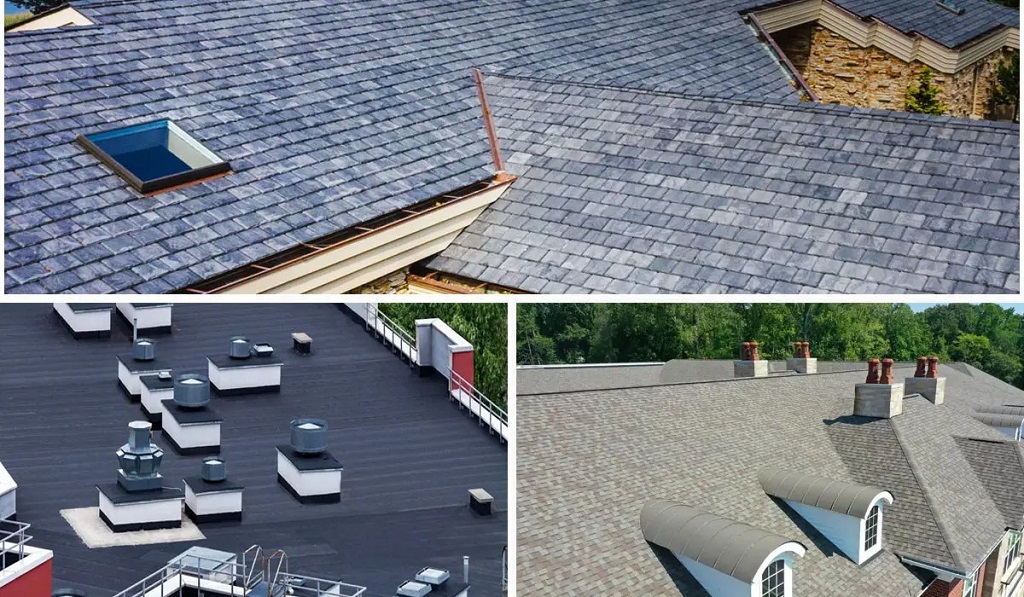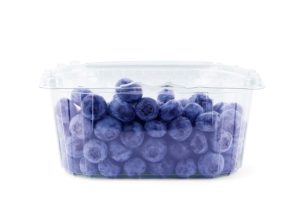Innovations in Roofing: Exploring the Latest Trends in Materials and Technology
Imagine a roof that powers your home, heals itself from damage, and fights climate change. Roofing evolves fast. Homeowners and builders seek smarter options. This article dives into fresh advances in roofing materials and tech. You gain insights to make informed choices.
Roofing pushes boundaries with green solutions and smart systems. Experts predict big shifts. The U.S. roofing contractors industry hits $76.4 billion in revenue this year, per IBISWorld. Global roofing market grows at 4.6% yearly, reaching $280 billion by 2029, says a report. These numbers show innovation drives growth.
Sustainable Roofing Materials
Builders turn to earth-friendly options. Sustainable roofing cuts environmental harm. It uses recycled content and renewable sources. Think shingles from old tires or plastic waste. These materials last longer and reduce landfill use.
One trend: recycled asphalt shingles. Manufacturers mix post-consumer waste into new products. This lowers carbon footprint. Homes stay protected while helping the planet.
Vegetated roofs gain traction. Plants cover the surface. They absorb rainwater and cool buildings. Cities like New York push these for urban heat reduction.
- Benefits of green roofing: Improves air quality, boosts biodiversity, extends roof life.
- Popular types: Extensive systems with low-maintenance plants, intensive ones like rooftop gardens.
Case study: A Chicago office building installed a green roof. It cut energy costs by 20%. Vegetation insulated the structure year-round.
Eco-friendly coatings add value. They reflect sunlight and keep interiors cool. No more high AC bills in summer.
Advances in Metal Roofing

Metal roofs dominate modern builds. They resist fire, wind, and hail. New alloys make them lighter and stronger. Installers handle them easier.
Self-healing coatings mark a breakthrough. Scratches seal themselves over time. This tech uses microcapsules that release repair agents.
Thermal regulation stands out. Panels adjust to temperature changes. They expand and contract without warping.
- Key innovations:
-
- Lightweight alloys: Reduce structural load on homes.
-
- Corrosion-resistant layers: Fight rust in coastal areas.
-
- Fire-resistant designs: Meet strict building codes.
A Texas home survived a wildfire thanks to metal roofing. Flames bounced off the surface. Owners rebuilt with minimal damage.
Color options expand. Pigments now mimic wood or tile. Aesthetics meet durability.
Solar-Integrated Roofing
Sun power meets roofing. Solar shingles blend seamlessly. They generate electricity without bulky panels.
Tesla leads with sleek designs. Tiles capture energy and look like traditional roofs. Homeowners sell excess power back to grids.
Bifacial solar tech captures light from both sides. It boosts efficiency by 10-20%.
- Advantages:
-
- Cuts utility bills.
-
- Increases home value.
-
- Supports clean energy goals.
In California, a neighborhood switched to solar roofs. Residents saw 30% savings on electricity. Systems integrate with home batteries for backup.
Installation simplifies. Clips and wires hide under tiles. No visible hardware.
Cool Roofing Technologies
Cool roofs reflect heat. They lower urban temperatures. Materials use special granules or paints.
Nanotechnology enhances performance. Tiny particles scatter sunlight. Roofs stay up to 50 degrees cooler.
In 2025, advanced coatings evolve. They self-clean and resist dirt buildup.
- Materials in focus:
-
- White membranes for flat roofs.
-
- Reflective metal sheets.
-
- Coated asphalt shingles.
A study from the U.S. Department of Energy shows cool roofs save 15% on cooling costs. Cities mandate them in hot climates.
Phoenix buildings adopted cool tech. Indoor comfort improved without extra AC.
Smart Roofing Systems
Tech infuses roofs. Sensors monitor leaks and damage. Apps alert owners in real time.
AI designs custom roofs. Software predicts weather impacts. Builders optimize materials.
Drone inspections speed checks. Cameras spot issues from above. No ladders needed.
- Features:
-
- Embedded sensors: Track moisture and temperature.
-
- Automated vents: Adjust airflow for efficiency.
-
- Integration with home systems: Link to smart thermostats.
A Florida contractor used drones post-hurricane. They assessed 50 roofs in one day. Repairs started faster.
Voice controls emerge. Command your roof to open vents or check status.
Green and Living Roofs
Living roofs turn tops into gardens. Soil and plants create ecosystems. They manage stormwater.
Sedum plants thrive in thin layers. They need little water.
Urban farms grow on roofs. Vegetables feed communities.
- Installation steps:
-
- Waterproof membrane.
-
- Drainage layer.
-
- Growing medium.
-
- Plant selection.
Toronto’s mandate led to widespread adoption. Buildings cut runoff by 70%.
Biodiversity booms. Birds and bees find homes.
Durable and Resilient Materials
Roofs face extreme weather. New composites withstand storms.
Synthetic slate mimics natural look. It’s lighter and unbreakable.
Ceramic-coated granules protect shingles. They resist UV rays and algae.
Impact-resistant tech absorbs hits. Hail bounces off.
- Examples:
-
- Polymer blends for flexibility.
-
- Fiber-reinforced membranes.
In Oklahoma, tornado-prone areas use these. Homes stay intact.
Longevity improves. Materials last 50+ years.
Installation and Maintenance Innovations
Tools change how roofs go up. Robotic arms place tiles precisely.
3D printing creates custom parts. It speeds repairs.
Augmented reality guides workers. Overlays show plans on site.
- Maintenance tips:
-
- Use apps for scheduling.
-
- Apply sealants yearly.
-
- Inspect after storms.
A company in Seattle used AR. Installation time dropped 25%.
Training programs teach new methods. Workers stay safe.
Energy-Efficient Roofing Solutions
Efficiency saves money. Insulated panels trap heat in winter.
Ventilated systems circulate air. They prevent moisture buildup.
Phase-change materials store heat. They release it slowly.
Homes in cold climates benefit. Heating costs fall.
- Trends:
-
- Multi-layer insulation.
-
- Reflective barriers.
A Minnesota study showed 25% energy savings.
Weather-Resistant Technologies
Roofs battle rain, snow, and wind. Hydrophobic coatings repel water.
Wind-uplift designs secure edges. They prevent lift-off.
Snow-melting systems use heat cables. Ice dams vanish.
In mountainous areas, these save structures.
- Case study: Colorado cabin with heated roof. No collapses in heavy snow.
Materials adapt to climates. Custom blends for regions.
Eco-Friendly Manufacturing Processes
Factories go green. They use solar power and recycle water.
Low-emission production cuts pollution.
Biodegradable packaging wraps products.
Industry shifts to circular economy. Waste becomes raw material.
A plant in Europe recycles 90% of scraps.
Integration with Building Design
Roofs blend with architecture. Curved panels fit modern homes.
Modular systems snap together. Quick assembly.
Aesthetic innovations offer textures and patterns.
Designers collaborate with engineers. Results stun.
- Examples:
-
- Wave-shaped metal.
-
- Textured composites.
A museum in London used innovative curves. It won awards.
Future Outlook on Roofing Innovations
Trends point to more integration. Roofs become energy hubs.
Nanotech and biotech merge. Self-growing materials?
Regulations push sustainability. Codes demand green features.
Homeowners demand smart options. Tech adoption rises.
Industry grows. Jobs in innovation boom.
Read More Also: How to Choose Umbrellas for Patios
Conclusion
Roofing innovations transform homes. Sustainable materials protect the earth. Tech adds smarts and efficiency. Metal and solar lead durability. Cool systems beat heat. Choose wisely for your needs.
Upgrade your roof today. Contact a local expert for advice.
FAQ
What are the top sustainable roofing materials in 2025?
Recycled shingles and green roofs top the list. They use waste and plants for eco-benefits.
How does solar roofing work?
Tiles capture sunlight and convert it to power. They integrate with home electrical systems.
What makes metal roofing innovative?
Self-healing coats and lightweight alloys. They boost lifespan and ease installation.
Are smart roofs worth it?
Yes. Sensors detect issues early. They save on repairs and energy.
How do cool roofs help the environment?
They reflect heat and reduce urban warming. This cuts energy use and emissions.









